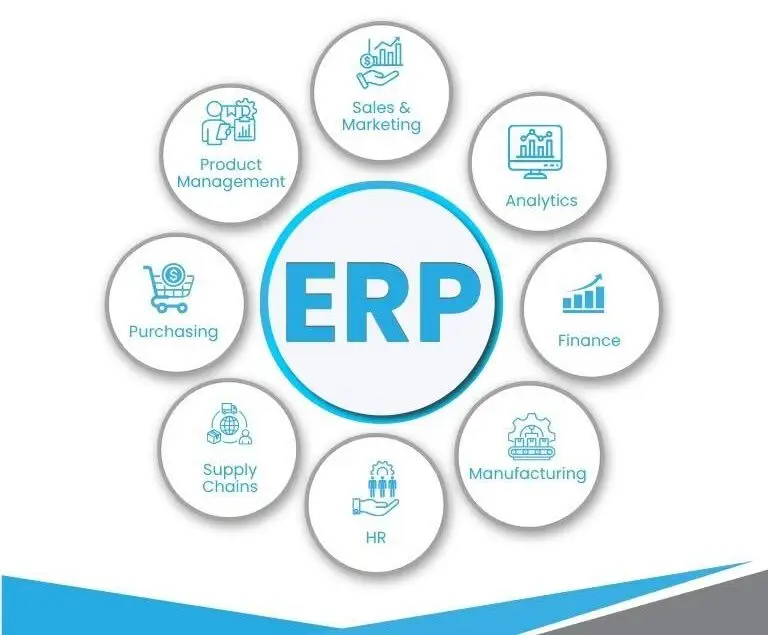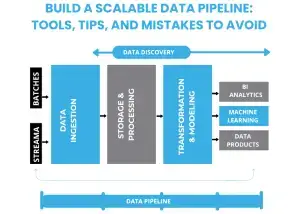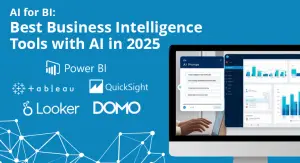Top 5 ERP Trends for Mid-Market Businesses in 2025
The ERP landscape isn’t what it was five years ago. Or even last year. As organizations evolve, so do their expectations for how Enterprise Resource Planning systems should support growth, decision-making, and real-time visibility.
This shift is especially clear among mid-market businesses—those growing fast and outgrowing spreadsheets, legacy tools, or basic accounting software. These companies need automated solutions that are flexible, scalable, and designed to work with their existing operations, not around them.
At Cruz Street, we work closely with mid-sized businesses at every stage of digital transformation, from those just starting to explore cloud-based ERP to those buried under clunky systems that no longer serve their goals. We’re seeing clear shifts in what ERP shoppers want in 2025, and these trends aren’t just passing fads. They signal a major mindset change.
Here are the five trends standing out in every RFP, demo, and stakeholder meeting we touch.
1. Plug-and-Play Integrations Over Full Custom Builds
Nobody wants to reinvent the wheel anymore. In 2025, ERP buyers are asking – “Will it work with what we already use?”
This marks a major shift away from the monolithic ERP mindset—where one system was expected to do it all—to an integration-first approach. Today’s buyers want modular systems that play well with others. They’re looking for native integrations, flexible APIs, and fast deployment timelines.
The expectation is clear. ERPs should be able to connect with existing finance tools, CRMs, HRIS platforms, and analytics tools like Amazon QuickSight without a painful implementation period. If it doesn’t integrate easily, it’s off the shortlist
2. Real-Time Visibility, Not Just Record-Keeping
Yesterday’s ERP was built for storage. Today’s buyer wants insight, not just access. Modern ERP shoppers want live dashboards, automated reporting, and the ability to visualize operations at a glance. They’re asking vendors – “How fast can I get from data to decision?”
That’s where modern BI layers and real-time pipelines come in, and why we often build them on top of traditional ERP platforms.
3. Low-Code and User-Friendly Wins
In the past, ERP meant you had to hire a small army of developers just to update a field or run a report. In 2025, that’s a deal-breaker. Buyers are prioritizing ease of use, drag-and-drop customization, role-based dashboards, and workflows that don’t require IT tickets. If your ERP doesn’t empower non-technical users, it’s losing market share
4. Flexible Pricing for Lean Teams
The days of one-size-fits-all licensing models are fading fast. Startups, scaling orgs, and even mid-market companies want pricing that reflects actual usage. ERP vendors are getting more competitive with tiered plans, modular pricing, and usage-based billing. Shoppers in 2025 are asking – “Do I have to pay for features I don’t need?”
Transparency matters more than ever. Smart ERP providers are listening
5. Built-In Intelligence, Not Buzzwords
AI is everywhere, but ERP buyers want it to do something, not just be mentioned in a pitch deck. Whether it’s predictive inventory, automated anomaly detection, or intelligent workflows, the ask is the same – “How does this ERP help us work smarter without more work?”
That’s where real AI adoption shows up—solving problems, not selling features.
What This Means for the Market
ERP platforms are shifting from passive record-keepers to active decision enablers. Buyers aren’t just comparing modules. They’re evaluating how the system fits into their entire data ecosystem. The legacy ERP model was “one platform for all.” Today, it’s “one platform that connects all”. The value lies in integrating with existing tools, not forcing companies to abandon them. For mid-market companies, that means choosing an ERP that scales with them, works with their tech stack, and doesn’t require a complete overhaul every two years.
At Cruz Street, we help these businesses bridge that gap. We connect ERP systems to analytics tools, clean and streamline workflows to drive seamless multi-system integration, and turn disconnected platforms into real-time insights that drive growth.
Thinking about upgrading your ERP or finally getting real value from the one you’ve got?
👉 Let’s talk about what your team actually needs in 2025




